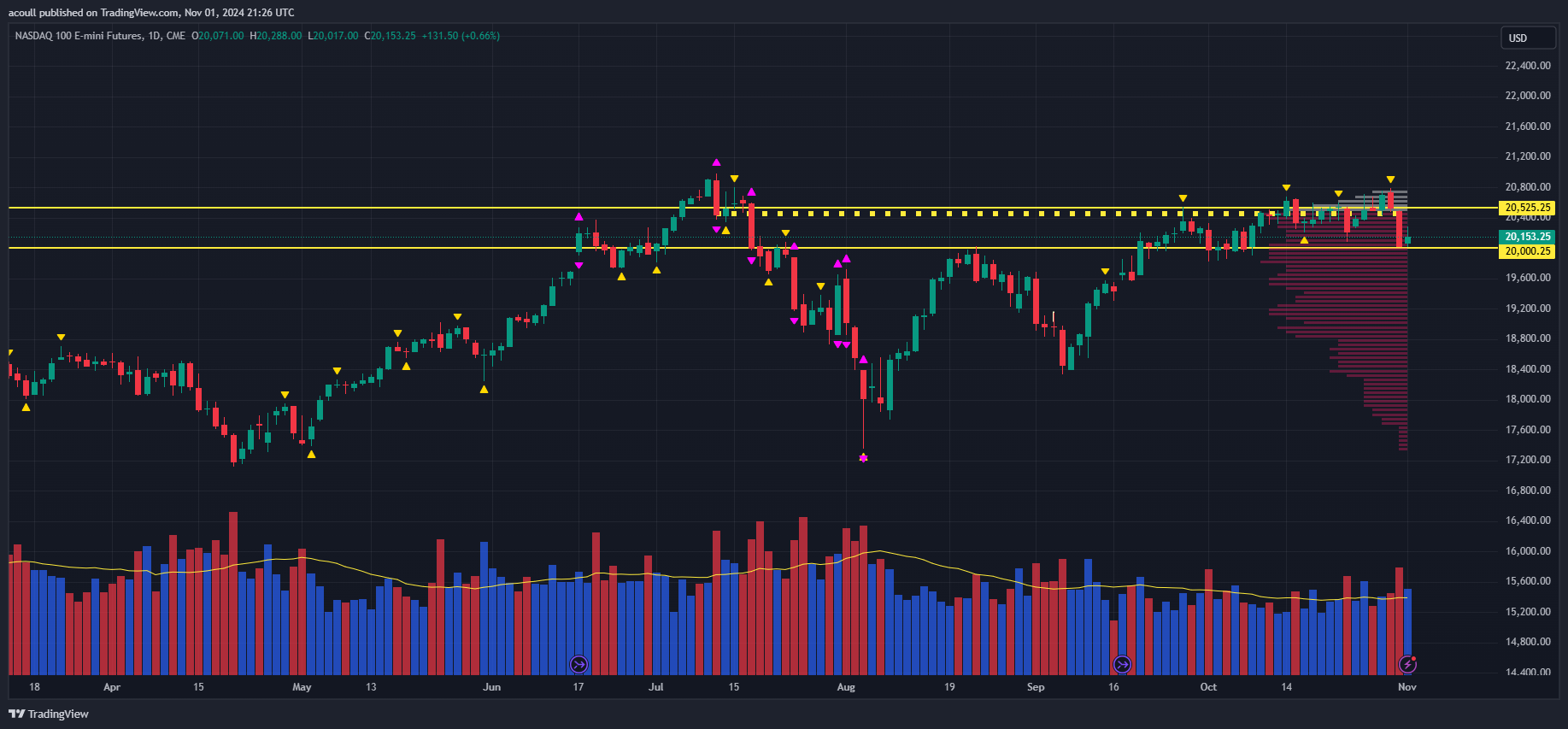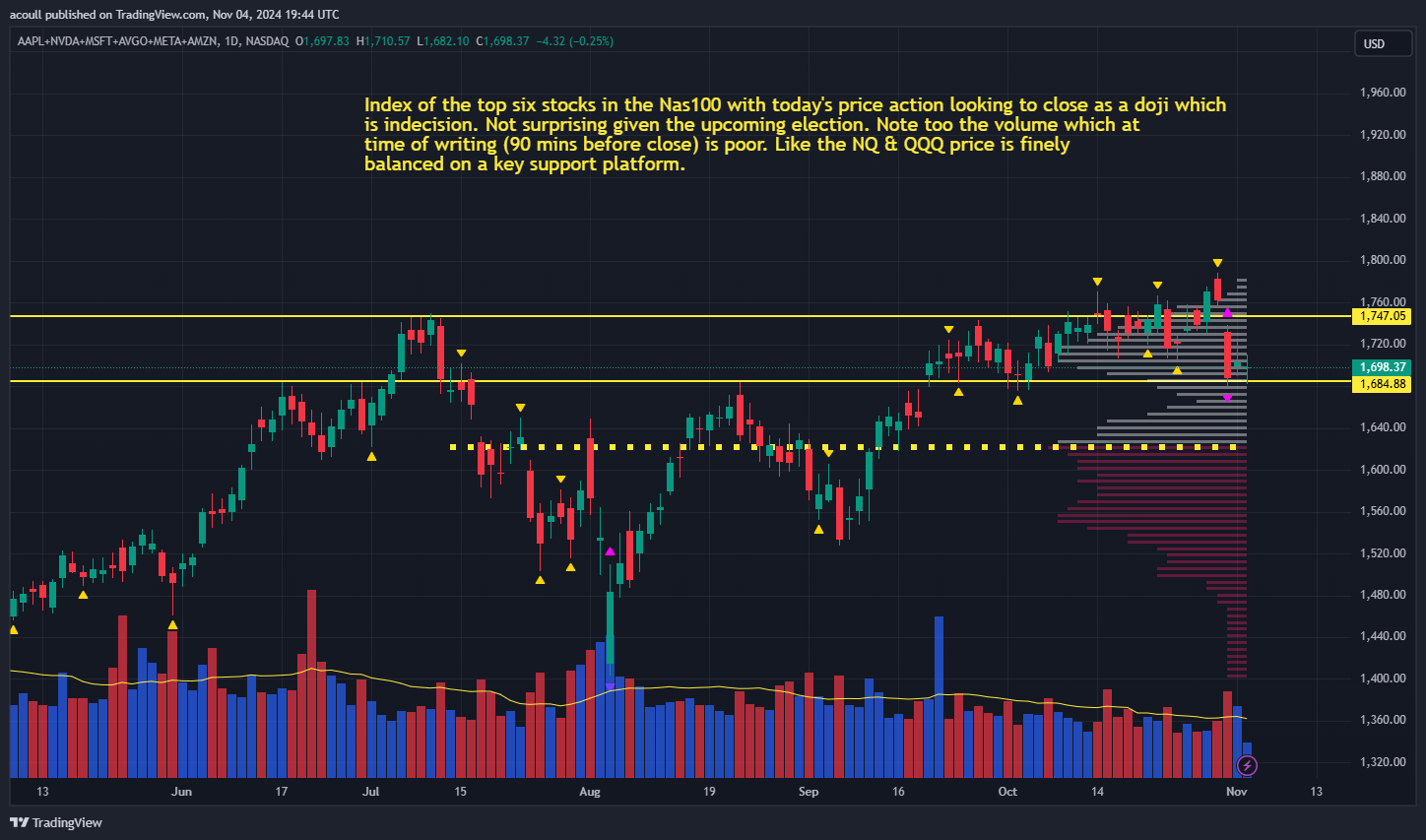If you follow me on X, you will know I’ve been focused on the (Futures for the ). What’s interesting about the NQ is that, unlike the (Futures for the and the (Futures for the ), the index has not only failed to regain its ATH of 24 July but has also been trading sideways since 19 September. This price action has given us an excellent example of Wyckoff’s second law of cause and effect, which we can see in the above chart, where we have a clear ceiling of resistance at the 20,500 region and a support floor at 20,000.

The significance of Wyckoff’s second law of cause of effect is that the longer the cause (the consolidation), the more extensive the effect (the trend) once the price breaks either higher or lower, particularly when this pattern is on a slower timeframe, such as the daily chart. Once there is a definitive break, the ceiling of resistance becomes strong support and vice versa. However, any break will require above-average, consistent volume.
There are several reasons why the NQ (and, by extension, the (ETF for the Nas 100) has failed to move out of this congestion, not least because the price action of the top six stocks that make up 40% of the NAS100 has been stalling. We can see this in the chart below, which shows the index I’ve created in Tradingview of these six stocks: Apple (NASDAQ:), Microsoft (NASDAQ:), Nvidia (NASDAQ:), Broadcom (NASDAQ:), Meta (NASDAQ:), and Amazon (NASDAQ:).

So, it is all to play for both the bulls and the bears, with a resolution after the Presidential election and the subsequent FOMC meeting.





